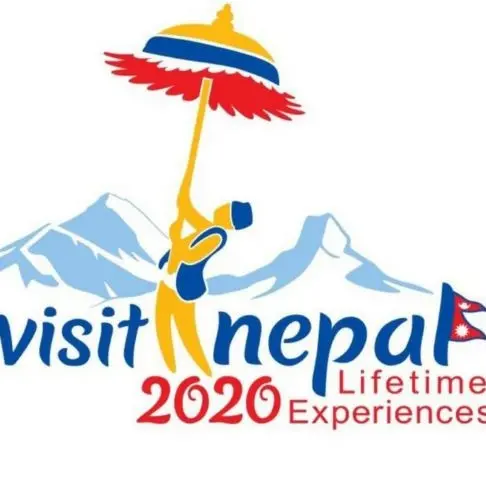**BY APD **writer Ishwar Khanal
Perhaps, Suraj Vaidya, National Coordinator of Visit Nepal 2020 and his team, feels pressurized with every tick of the clock since there's nothing like a ticking clock to get people to snap into action.
For Vaidya's team, every breath brought in and released is one breath closer towards 2020.
Reason: They have been entrusted to fulfill the ambitious target to bring in two million tourists to make the "Visit Nepal 2020" a grand success.
National Coordinator Vaidya, however, is enthusiastic to make it happen since his team has already fastened the laces.
He feels Visit Nepal (VN) 2020 is going to be great from different angles. He is hopeful that Nepal can bring in three types of tourists – religious tourists, adventure/sports tourists, and investors -- from China.
"Very recently, we had a meeting with Chinese Tourism Minister Luo Shugang in Kathmandu where we briefed him about VN 2020 and had a comprehensive discussion regarding the essentials about Nepal and China working together to make 2020 an ownership for both of us," he shared exclusively with APD in a recent interview.
Nepal and China discussed about climbing Mt. Everest from both sides, and meet in the Summit.
"We talked about climbing Everest from one side, meeting at the top, and dropping on the other side," he said, while highlighting the wide discussions held about working together to promote the mountains lying in both the countries.
Realizing the need of land connectivity, Vaidya, who is also a business leader, said they urged the Chinese side to open routes at the Nepal-China borders to make it easier for people from both the countries.
Considering the substantial number of tourists that Tibet receives, Nepal proposed with the Chinese side about working together to promote tourism in Nepal.
Tibet receives around 14 million tourists annually.
"If we can increase the number of tourists from Tibet to Nepal, it would be tremendously beneficial for us," Vaidya informed.
He is optimistic that since the Chinese government understands Nepal's issues, tourism would be one of the means to flourish friendship further.
According to him, Nepal can bring in three types of tourists – religious tourists, adventure/sports tourists, and investors -- from China. "Religious tourism is increasing in China. Besides, Buddhism has its own core value," he suggested.
Secondly, young tourists are coming out of China or adventure tourism. "Since Nepal has plenty of adventure tourism spots, we can attract a lot of them," he adds.
The third type of tourists that Nepal is looking at from China, according to him, is investors.
Referring to the one million international tourists visiting Nepal in the last 11 months, Vaidya termed the figure as a "good sign".
He said that China, which proved to be Nepal's generous friend during the 2015 devastating earthquake, would be more generous by sending a significant number of tourists to Nepal.
"In this regard, we are encouraged that the increased number of flights from China has made it easier for the Chinese tourists to come to Nepal and vice versa," he added.
Vaidya has plans to have goodwill ambassadors from China.
"If we could get Jack Ma to say a few words about Nepal and its tourism, we could gain tremendously," he quipped.
He also has a plan to approach WeChat, a social platform popular in China, to be a partner for the VN 2020.
Vaidya's idea is also to approach actress Ni Ni of the Chinese road movie "Up in the Wind", which was shot in Kathmandu, Patan, Chitwan and Pokhara, and ask her to say: "Nepal is a beautiful country to visit".
"This would make a lot of difference," said Vaidya, the former president of the Federation of Nepalese Chambers of Commerce and Industry (FNCCI).
That's not all. He says if Nepal could get the head monk of Shaolin Temple to be the tourism ambassador; that would be amazing.
He, however, is a little bit disappointed about the length of stay of Chinese tourists in Nepal.
"If we compare Nepal with Laos or Cambodia, we are far behind in this regard."
Reason: Nepal lacks Chinese-speaking tourist guides. Lack of authentic Chinese restaurants is another reason.
Therefore, targeting 2020, they have plans to set up 'quick Chinese language schools' in Kathmandu, Pokhara, Lumbini, Chitwan, and some other places to teach Chinese language to tourist guides.
"They may not speak perfect Chinese but at least they may be able to talk about the very fundamentals. These are some of the things that we are working on," he informed.
Meanwhile, China's One Belt One Road Initiative, too, would be a support to boost Nepal's tourism.
"Nepal has supported OBOR and we are a strong partner to that," he said referring to the recent trade agreements signed between Nepal and China.
"This is a huge gesture that China has shown to Nepal," he said while suggesting improvement of the highways linking the two countries.
"Probably with the help of the Chinese government, we can extend the road and belt concept into infrastructural development. This will give a tremendous amount of support to Nepal's economy. Furthermore, this will bring us closer to China," he maintained.
Vaidya is also equally keen on attracting Chinese investors here.
"Nepal has to do a lot of homework by making easier for Chinese investors to invest in Nepal," he said suggesting the government to make an environment that is conducive for Chinese investors.
He is optimistic that a lot of Chinese investments will be interested to invest in Nepal than Bangladesh, Afghanistan or Pakistan provided that Nepal government ensured hassle-free bureaucratic formalities.
"The ball is on the government's court," Vaidya, who is the chairman of Vaidya's Organization of Industries and Trading Houses, said.
(ASIA PACIFIC DAILY)
 简体中文
简体中文

